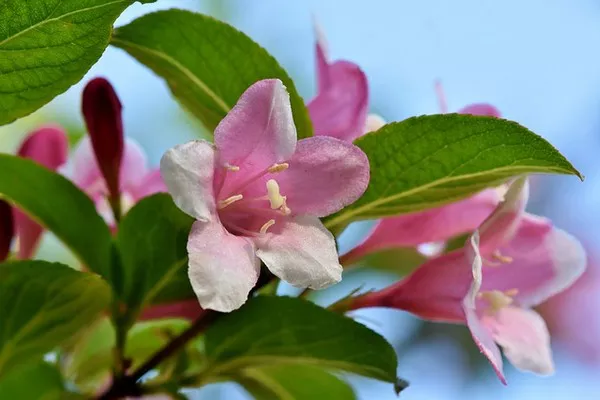Flowers and bees share a mutualistic relationship that has endured for millions of years. While we often admire the vibrant colors and captivating scents of flowers, it is essential to understand the pivotal role these beautiful blooms play in the lives of bees. Beyond their aesthetic appeal, flowers serve as a crucial source of sustenance and reproductive opportunities for these industrious insects. In this article, we will delve into the intricate dance between flowers and bees, exploring the myriad ways in which flowers benefit their buzzing visitors.
Nectar: A Sweet Reward
One of the primary ways flowers support bees is by offering nectar—a sugary liquid that serves as an energy source. Nectar is the lifeblood of many bee species, providing them with the carbohydrates necessary for their daily activities. Bees, in turn, have evolved specialized mouthparts, known as proboscises, to efficiently extract nectar from the deepest crevices of flowers.
The nectar, rich in sugars like glucose and fructose, is an energy-packed reward for bees. As they visit flowers in search of nectar, bees inadvertently become pollinators, transferring pollen grains from one flower to another. This unintentional act of pollination is essential for the reproduction of many plant species and results in the formation of seeds and fruits.
Pollen: A Vital Protein Source
In addition to nectar, flowers provide bees with pollen, a protein-rich substance crucial for the development and nourishment of bee larvae. Pollen is the primary source of amino acids, lipids, vitamins, and minerals for bees, making it indispensable for their growth and survival.
Bees actively collect pollen by using specialized structures on their bodies, such as their pollen baskets or corbiculae, located on their hind legs. As bees forage for nectar, they brush against the anthers of flowers, picking up pollen grains that adhere to their fuzzy bodies. Subsequently, when they visit other flowers, some of this pollen is transferred to the stigma, enabling fertilization and fruit development.
Plant Reproduction: The Bee’s Unintentional Role
Flowers and bees engage in a remarkable partnership, with each party benefiting from the other’s presence. While bees gain sustenance and nourishment from flowers, plants rely on these industrious insects for their reproductive success. Bees serve as efficient pollinators, facilitating the transfer of pollen between flowers of the same species.
For plants, successful pollination is critical to ensure the production of seeds and fruits. Many flowering plants have evolved mechanisms that attract bees and other pollinators, including colorful petals, fragrant scents, and sweet nectar rewards. By luring bees to their blossoms, plants increase the chances of successful pollination, ultimately leading to the dissemination of their genetic material.
Biodiversity and Ecosystem Health
The relationship between flowers and bees extends beyond mere survival and reproduction—it has far-reaching consequences for ecosystem health and biodiversity. Bees play a pivotal role in pollinating a vast array of plant species, from wildflowers to agricultural crops. This pollination service not only ensures the survival of individual plant species but also maintains the overall health and diversity of ecosystems.
Without bees and other pollinators, many plant species would struggle to reproduce, potentially leading to declines in their populations or even local extinctions. In turn, this could disrupt the delicate balance of ecosystems, as many other animals rely on the fruits, seeds, and nectar produced by these plants for their own sustenance.
Agricultural Benefits
The importance of bees in agriculture cannot be overstated. Many of the world’s most economically valuable crops, such as apples, almonds, and blueberries, rely on pollinators like bees for successful fruit production. Commercial beekeeping operations are instrumental in providing pollination services to agriculture, with beekeepers transporting hives of honeybees to crop fields during the flowering season.
The relationship between flowers and bees is particularly evident in commercial agriculture, where large-scale monoculture farming would be unsustainable without pollinators. The value of these pollination services is estimated in the billions of dollars annually, highlighting the crucial role that flowers and bees play in food production and global food security.
Conservation Concerns
Despite their vital role in ecosystems and agriculture, bees and other pollinators face numerous challenges that threaten their survival. Habitat loss, pesticide exposure, climate change, and the spread of pathogens are among the key factors contributing to the decline in bee populations worldwide. As bees struggle to find suitable forage and nesting sites, their ability to carry out their essential pollination services becomes compromised.
Conservation efforts are underway to protect and support bee populations. These initiatives include the creation of pollinator-friendly habitats, reduced pesticide usage, and increased awareness of the importance of pollinators in both natural and agricultural settings. By safeguarding the well-being of bees, we can ensure the continued health of ecosystems and secure our food supply.
Conclusion
In the intricate tapestry of nature, flowers and bees have woven a symbiotic relationship that spans millions of years. Flowers offer bees the sustenance they need in the form of nectar and pollen, while bees, in turn, serve as essential pollinators, facilitating the reproduction of countless plant species. This mutualistic partnership extends beyond survival and reproduction; it shapes ecosystems, supports biodiversity, and underpins global agriculture.
As we celebrate the beauty of flowers, we must also recognize their vital role in supporting bee populations and, by extension, the health of our planet. By fostering an appreciation for the complex interplay between flowers and bees, we can work together to protect these essential pollinators and the ecosystems that rely on their services. In doing so, we ensure a more sustainable and resilient future for both bees and ourselves.


